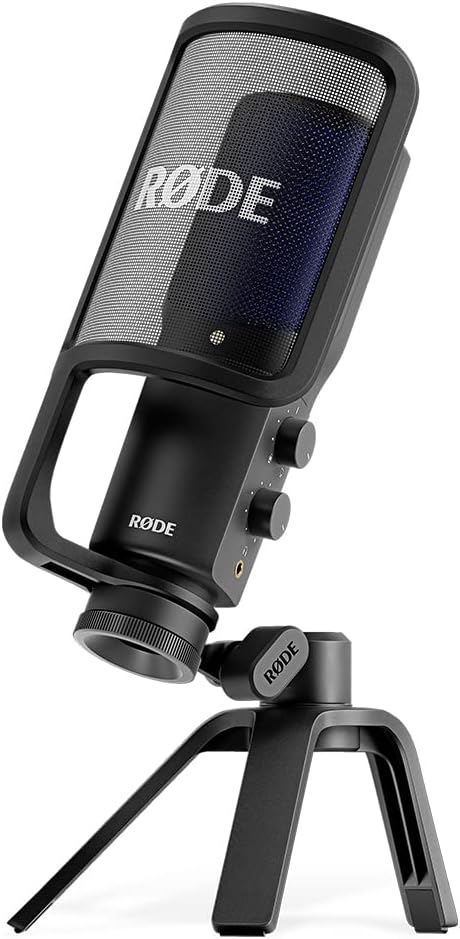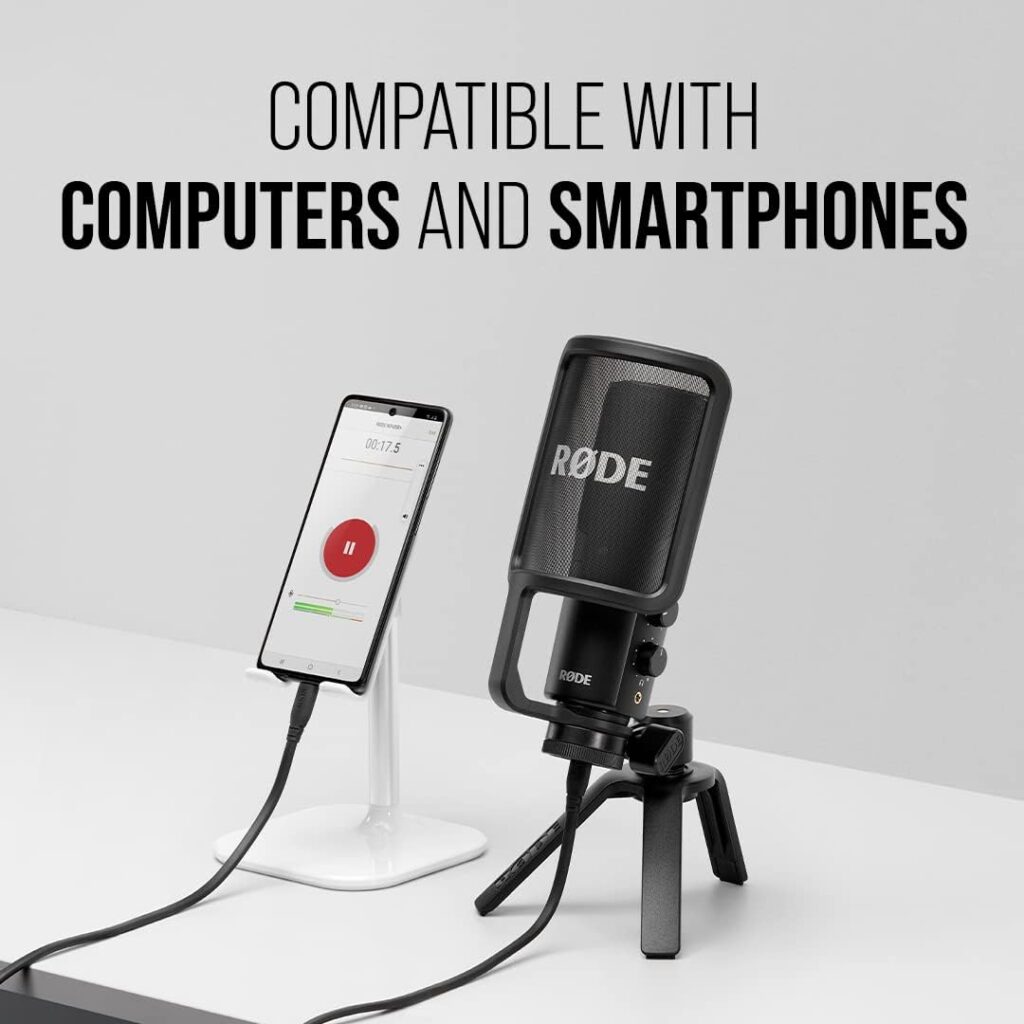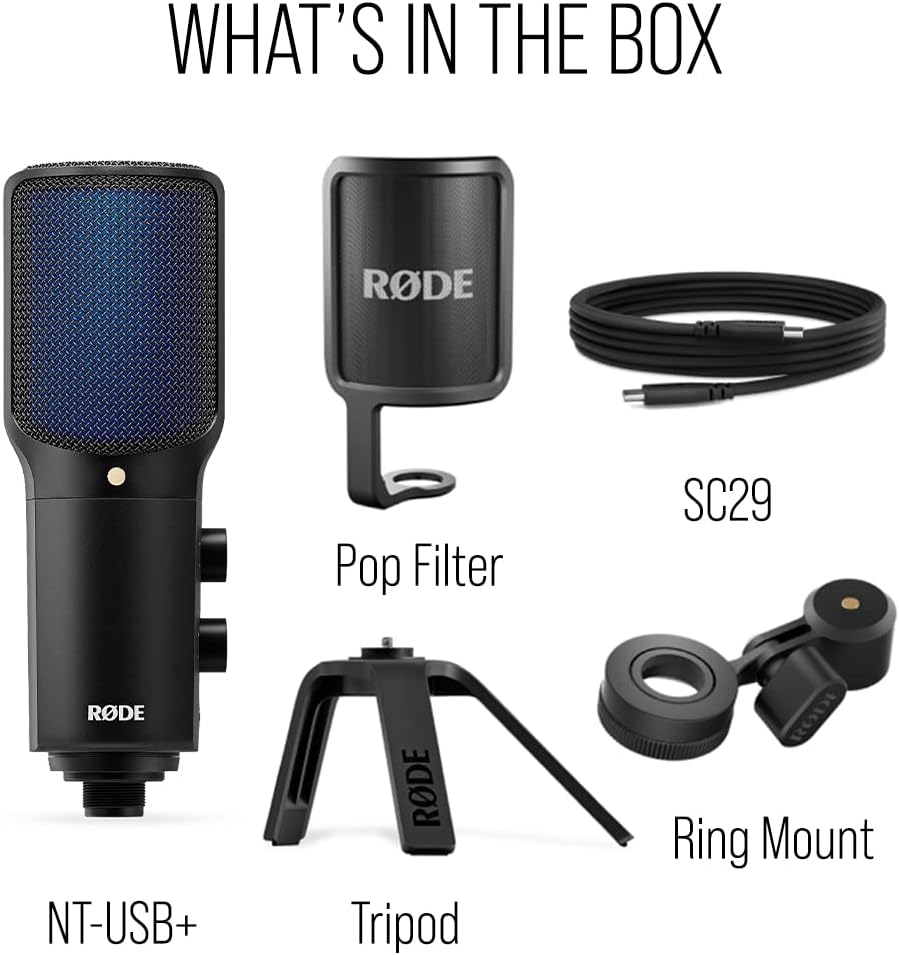Rode NT USB Review
The Rode NT-USB is a standout in the crowded field of USB microphones, offering a blend of professional-grade audio quality, user-friendly design, and versatility that appeals to podcasters, musicians, streamers, and content creators alike. Since its release, it has earned a reputation as one of the best USB microphones in its price range, competing with heavyweights like the Audio-Technica ATR2100x and the Blue Yeti. In this review, we’ll dive deep into its features, performance, build quality, and overall value, exploring why it’s a go-to choice for so many and where it might fall short.
Rode NT-USB Review
Rode, an Australian company renowned for its high-quality audio equipment, designed the NT-USB to bridge the gap between professional studio microphones and the plug-and-play simplicity of USB connectivity. Launched in 2014, the NT-USB has remained relevant thanks to its timeless design and consistent performance, even as newer models have entered the market.
Out of the box, the NT-USB exudes quality. It arrives with a sturdy metal stand, a pop filter, a 6-meter USB cable, and a storage pouch—everything you need to get started. The microphone itself has a sleek, minimalist look with a matte black finish and a robust metal body that feels reassuringly solid. At approximately 520 grams, it’s heavier than some competitors, but this weight contributes to its stability and premium feel.
The setup is as straightforward as it gets: plug the USB cable into your computer (Windows or macOS), select it as your audio input, and you’re ready to record. No drivers or complicated software are required, making it an ideal choice for beginners and seasoned users alike.
Technical Specifications
Before diving into performance, let’s break down the NT-USB’s key specs:
- Capsule: 0.50-inch condenser
- Polar Pattern: Cardioid
- Frequency Range: 20 Hz – 20 kHz
- Maximum SPL: 110 dB
- Sample Rate: 48 kHz
- Bit Depth: 16-bit
- Connectivity: USB
- Power: USB-powered (5V)
- Additional Features: On-mic gain control, headphone monitoring with zero-latency, 3.5mm headphone jack
The cardioid polar pattern is a smart choice for a USB mic, as it focuses on sound directly in front of the microphone while minimizing background noise from the sides and rear. This makes it perfect for solo recordings, voiceovers, or streaming, though it’s less suited for multi-person setups without additional equipment.
Build Quality and Design
The NT-USB’s build quality is one of its strongest selling points. The all-metal construction—from the body to the grille—ensures durability, and it feels like a product that can withstand years of use. The included desktop stand is equally robust, with a wide base that prevents tipping and a threaded mount that allows for angle adjustments. For those who prefer more flexibility, the mic can be detached and mounted on a standard mic stand or boom arm, thanks to its 3/8-inch threading (an adapter for 5/8-inch threads is included).
The pop filter is another thoughtful addition. It attaches directly to the stand and sits a few inches in front of the mic, effectively reducing plosives (those harsh “p” and “b” sounds) without the need for an external accessory. While it’s not adjustable, its fixed position is well-calibrated for most recording scenarios.
On the mic itself, you’ll find two dials: one for adjusting the headphone monitoring volume and another for mixing between direct mic input and computer playback. These controls are simple but incredibly useful, especially for live monitoring during recording or streaming. The 3.5mm headphone jack is a bonus, offering zero-latency monitoring—a feature that’s rare in budget USB mics.
Sound Quality
The heart of any microphone is its sound quality, and the NT-USB delivers in spades. Its 0.50-inch condenser capsule captures audio with remarkable clarity and warmth, striking a balance between crisp highs and rich lows. The 20 Hz – 20 kHz frequency response ensures it can handle a wide range of applications, from spoken word to musical performances.
For voice recording—whether podcasts, voiceovers, or streaming—the NT-USB produces a natural, broadcast-ready sound with minimal post-processing required. Compared to the Blue Yeti, which can sound overly bright or boomy depending on settings, the NT-USB offers a more neutral tone that’s easier to work with. It’s not as clinical as some XLR studio mics, but it adds just enough warmth to flatter most voices.
When tested with musical instruments like acoustic guitar or vocals, the NT-USB holds its own. It captures nuances effectively, though it’s worth noting that its 110 dB maximum SPL (sound pressure level) means it’s not ideal for extremely loud sources like drum kits or screaming vocals. For quieter instruments or singing, however, it performs admirably, especially when paired with a decent recording environment.
The cardioid pattern excels at rejecting off-axis noise, making it a great choice for untreated rooms. During testing in a home office with ambient sounds (a humming air conditioner and distant traffic), the NT-USB kept the focus on my voice, with background noise barely audible. That said, it’s still sensitive enough to pick up keyboard clicks or table taps if you’re not careful with placement.
Ease of Use
One of the NT-USB’s biggest strengths is its plug-and-play simplicity. There’s no need for an audio interface, phantom power, or complex software, which makes it accessible to beginners who might be intimidated by traditional XLR setups. It’s compatible with most digital audio workstations (DAWs) like Audacity, GarageBand, or Reaper, and it works seamlessly with video conferencing platforms like Zoom or streaming software like OBS.
The on-mic controls are intuitive: the headphone volume dial lets you adjust monitoring levels on the fly, while the mix control allows you to blend your voice with playback from your computer—perfect for podcasting with pre-recorded intros or music. The lack of additional polar patterns (unlike the Blue Yeti) might limit versatility, but it also reduces the learning curve, keeping things simple and focused.
Accessories and Value
The included accessories add significant value to the NT-USB package. The 6-meter USB cable is longer than most competitors offer, giving you flexibility in setup. The pop filter, while basic, does its job well, and the storage pouch is a nice touch for portability. The desktop stand is functional, but many users will likely upgrade to a boom arm for better positioning—something to factor into the overall cost.
Priced around $169 USD (as of March 2025), the NT-USB sits in the mid-range of USB microphones. It’s more expensive than budget options like the Fifine K669B ($30-$40) but significantly cheaper than premium models like the Shure MV7 ($250+). For what you get—excellent sound, solid build, and useful extras—it’s a strong value proposition.
Pros and Cons
Pros:
- Exceptional sound quality for a USB mic
- Robust, premium build
- Zero-latency headphone monitoring
- Easy plug-and-play setup
- Useful accessories included
Cons:
- Limited to cardioid pattern (no multi-pattern options)
- Desktop stand could be more adjustable
- Not ideal for very loud sound sources (low max SPL)
- Slightly pricey compared to budget alternatives
Comparisons to Competitors
How does the NT-USB stack up against its rivals? Against the Blue Yeti ($129), it offers superior build quality and a more neutral sound, though it lacks the Yeti’s multiple polar patterns (cardioid, omnidirectional, bidirectional, stereo). The Audio-Technica ATR2100x ($99) is a compelling alternative with both USB and XLR connectivity, but its sound is less refined than the NT-USB’s. For those willing to spend more, the Shure MV7 ($249) provides hybrid USB/XLR functionality and a slightly punchier vocal tone, but it requires more setup effort.
The NT-USB shines brightest for users who want a no-fuss, high-quality USB mic without the complexity of an XLR setup. If you need versatility or plan to expand into a multi-mic rig, you might outgrow it—but for solo creators, it’s tough to beat.
Final Thoughts
The Rode NT-USB is a near-perfect USB microphone for its target audience. It combines studio-quality audio with the simplicity of USB connectivity, wrapped in a durable, stylish package. While it’s not the most versatile mic on the market—lacking multiple polar patterns or XLR options—it excels at what it’s designed to do: provide hassle-free, high-fidelity recording for solo creators.
At $169, it’s an investment, but one that pays off in reliability and performance. Whether you’re launching a podcast, streaming on Twitch, or recording your first EP, the NT-USB is a tool that grows with you while staying refreshingly easy to use. Rode has crafted a microphone that’s not just good—it’s exceptional for its class, earning its place as a staple in the audio world over a decade after its debut.



